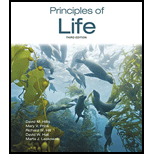
Concept explainers
To find: The fundamental differences between
Introduction: Fungi are a kind of eukaryotic organisms that include yeasts, molds, and mushrooms. They play a crucial role in energy cycling between and within the ecosystems. They are found in marine, terrestrial, and freshwater environments. They are part of the diverse community of decomposers.
Explanation of Solution
The food materials are digested by the fungi in a distinctive way. They have the capacity to degrade large and insoluble molecules. In fungi, food degradation and digestion are carried out by the secretion of digestive enzymes to break down large food molecules present in the environment. The products that are broken down are then absorbed by the cellular membranes of the fungi in a process known as absorptive heterotrophy.
Fungi possess specific structures that facilitate the absorption of nutrients from the environment. Unicellular fungi such as yeasts absorb nutrients across their cell surfaces directly. Multicellular fungi possess a body structure called the mycelium that is composed of a rapidly growing tubular filament called the hyphae through which the absorption of nutrients takes place.
Thus, fungal species obtain their nutrients from the decomposing and dead organic matter, whereas plants and animals acquire their nutrition from organic substances. This is the fundamental difference between the way fungi, plants, and animals obtain their nutrition.
Want to see more full solutions like this?
Chapter 21 Solutions
PRINCIPLES OF LIFE
 Human Anatomy & Physiology (11th Edition)BiologyISBN:9780134580999Author:Elaine N. Marieb, Katja N. HoehnPublisher:PEARSON
Human Anatomy & Physiology (11th Edition)BiologyISBN:9780134580999Author:Elaine N. Marieb, Katja N. HoehnPublisher:PEARSON Biology 2eBiologyISBN:9781947172517Author:Matthew Douglas, Jung Choi, Mary Ann ClarkPublisher:OpenStax
Biology 2eBiologyISBN:9781947172517Author:Matthew Douglas, Jung Choi, Mary Ann ClarkPublisher:OpenStax Anatomy & PhysiologyBiologyISBN:9781259398629Author:McKinley, Michael P., O'loughlin, Valerie Dean, Bidle, Theresa StouterPublisher:Mcgraw Hill Education,
Anatomy & PhysiologyBiologyISBN:9781259398629Author:McKinley, Michael P., O'loughlin, Valerie Dean, Bidle, Theresa StouterPublisher:Mcgraw Hill Education, Molecular Biology of the Cell (Sixth Edition)BiologyISBN:9780815344322Author:Bruce Alberts, Alexander D. Johnson, Julian Lewis, David Morgan, Martin Raff, Keith Roberts, Peter WalterPublisher:W. W. Norton & Company
Molecular Biology of the Cell (Sixth Edition)BiologyISBN:9780815344322Author:Bruce Alberts, Alexander D. Johnson, Julian Lewis, David Morgan, Martin Raff, Keith Roberts, Peter WalterPublisher:W. W. Norton & Company Laboratory Manual For Human Anatomy & PhysiologyBiologyISBN:9781260159363Author:Martin, Terry R., Prentice-craver, CynthiaPublisher:McGraw-Hill Publishing Co.
Laboratory Manual For Human Anatomy & PhysiologyBiologyISBN:9781260159363Author:Martin, Terry R., Prentice-craver, CynthiaPublisher:McGraw-Hill Publishing Co. Inquiry Into Life (16th Edition)BiologyISBN:9781260231700Author:Sylvia S. Mader, Michael WindelspechtPublisher:McGraw Hill Education
Inquiry Into Life (16th Edition)BiologyISBN:9781260231700Author:Sylvia S. Mader, Michael WindelspechtPublisher:McGraw Hill Education





